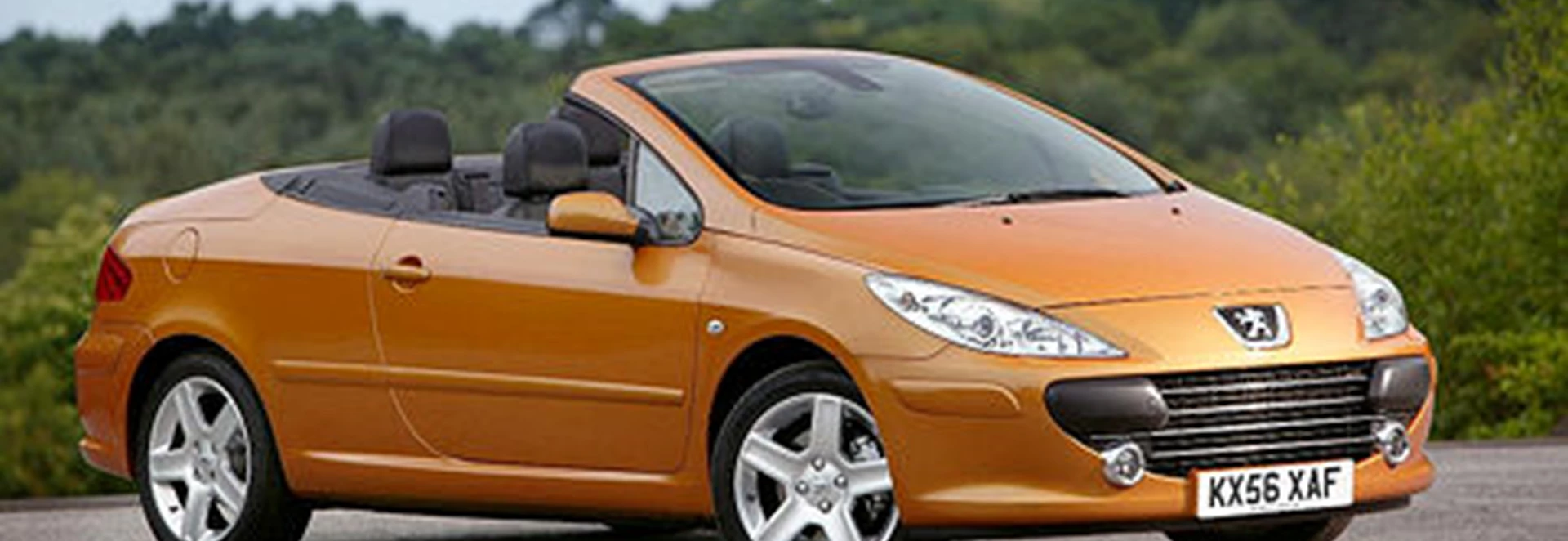2006 has proved to be a good year for the 307 CC so far. First-quarter sales are 44% up on last year, so there's clearly strong demand for what remains one of the best-looking cars in the folding-roof coupé class. But that class is about to become much stronger, with the introduction of the Ford Focus Coupé-Cabriolet, the Vauxhall Astra TwinTop and the Volkswagen Eos. How are these cars going to affect the 307?Among Peugeot devotees, they are not going to affect it at all. For those who are prepared to pick and choose, on the other hand, they represent very strong opposition. The 307 has been around for three years now, so it's certainly well-established, but at the same time there's a risk that it could be starting to feel out of date.It doesn't look it. In this form the 307 has an elegance that is almost entirely missing from the hatchback on which it's based - that's why Peugeot used its profile for the 307 World Rally Championship contender. But although it seemed fresh and new three years ago, aspects that you could quietly forget about back then seem more of an issue now.For example, the CC's case is not helped by the fact that its luggage volume amounts to 350 litres with the roof up. The opposition can beat that, admittedly not by much in some cases (and the reduction to 204 litres when the roof is stowed away isn't too bad for the class).Other manufacturers are also promising decent room for four passengers in their forthcoming cars, and this is something the 307 CC simply doesn't have; despite claims that you can carry four adults, it would have saved a lot of effort and expense, and not really reduced the car's practicality, if Peugeot had abandoned the rear seat altogether.Then there's the question of scuttle shake. The CC has a limited amount of this when the roof is down, as all cars of the same type must do. Other manufacturers, however, have made their coupé-convertibles feel almost like saloons or hatchbacks even when the roof is down, and that doesn't apply to the 307 - small but noticeable shakes and creaks offer constant reminders that the top is not a permanent feature.307 CC owners may be reading this and wondering what all the fuss is about. I'm sure a lot of them are very pleased with their purchases, and that's fine. It's just that anyone who is considering buying a car like this in future has a much wider choice, and that may hurt Peugeot's sales. We'll soon see if that opinion is justified.It has now become the class norm that folding or unfolding the roof is a question of pressing a button and waiting for just under half a minute (25 seconds in this case). The 307 meets that norm, and it's difficult to see any rival improving on it in the foreseeable future.The test car used the 136bhp two-litre turbo diesel engine matched with the six-speed manual gearbox, so there are no complaints about performance (though, as with many French units, slow-witted synchromesh means it's possible to crunch from one gear to the next during an even moderately quick change). Take a corner enthusiastically and - once more, even with the roof up - you feel the lack of bodyshell integrity, but on the whole this is a nicely set-up car, handling well without providing the rollerskate ride quality of some performance Peugeots.It may not read this way, but I enjoyed my time with the 307 CC. I'm pretty confident that it will continue to sell well, but there are enough niggles to suggest that Peugeot will now have to rely even more on the car's styling than it has in the past. Engine 1997cc, 4 cylinders Power 136bhp Transmission 6-speed manual Fuel/CO2 47.1mpg / 159g/km Acceleration 0-62mph: 10.3 seconds Top speed 129mph Price From £18714.00 approx Details correct at publication date

Our Rating



